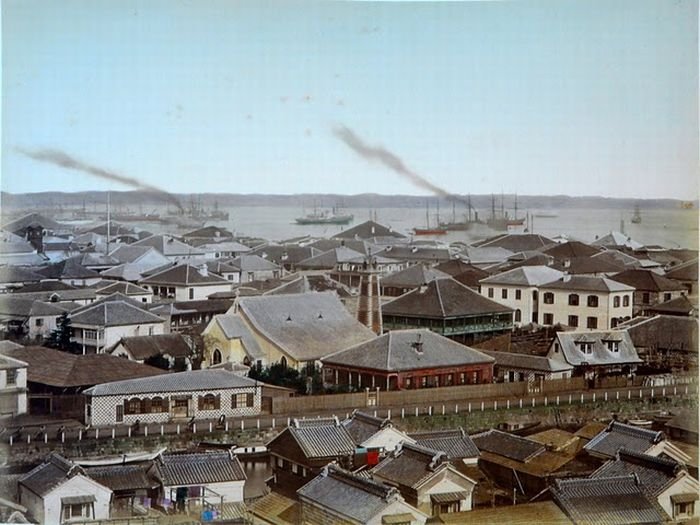|
|
History: Old Japan
|
Prehistory
A Paleolithic culture around 30,000 BC constitutes the first known habitation of Japan. This was followed from around 14,000 BC (the start of the Jōmon period) by a Mesolithic to Neolithic semi-sedentary hunter-gatherer culture, possibly ancestors of the Ainu people, characterized by pit dwelling and rudimentary agriculture. Decorated clay vessels from this period, often with plaited patterns, are some of the oldest surviving examples of pottery in the world. The Yayoi period, starting around 500 BC, saw the introduction of new practices like wet-rice farming, a new style of pottery, and metallurgy, brought by migrants from China and Korea.
The Japanese first appear in written history in the Chinese Book of Han. According to the Records of Three Kingdoms, the most powerful kingdom on the archipelago during the 3rd century was called Yamataikoku. Buddhism was first introduced to Japan from Baekje, one of the Three Kingdoms of Korea, but the subsequent development of Japanese Buddhism was primarily influenced by China. Despite early resistance, Buddhism was promoted by the ruling class and eventually gained acceptance beginning in the Asuka period.
The Nara period of the 8th century marked the emergence of a strong Japanese state, centered on an imperial court in the city of Heijō-kyō (modern Nara). In addition to the continuing adoption of Chinese administrative practices, the Nara period is characterized by the appearance of a nascent written literature with the completion of the massive chronicles Kojiki (712) and Nihon Shoki (720). The smallpox epidemic of 735–737 is believed to have killed as much as one-third of Japan's population. In 784, Emperor Kammu moved the capital from Nara to Nagaoka-kyō for a ten-year period before relocating it to Heian-kyō (modern Kyoto) in 794, where it remained for more than a millennium. This marked the beginning of the Heian period, during which time a distinctly indigenous Japanese culture emerged, noted for its art, poetry and literature. Lady Murasaki's The Tale of Genji and the lyrics of Japan's national anthem Kimigayo were written during this time.
|
|









